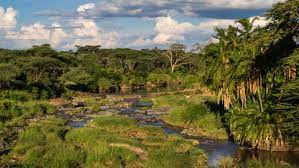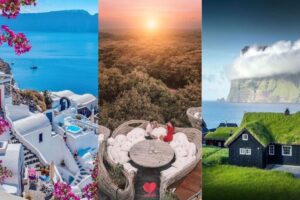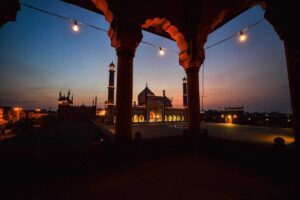The 10 largest national parks in Africa
A national park is an area set aside by a national government for the preservation of the natural environment .
A national park may be set aside for purposes of public recreation and enjoyment or because of its historical or scientific interest.
Most of the landscapes and their accompanying plants and animals in a national park are kept in their natural state.
So, today we are going to talk about the 10 largest National parks in Africa.
List of The 10 largest National parks in Africa:
- 1.Namib-Naukluft National park
- 2.Gilf El -Kebir National park
- 3.Luengue- Luiana and Mavinga National Park
- 4.Kruger National park
- 5.Salonga national park
- 6.Gebel Elba national park
- 7.Boucle du Baoule national park
- 8.Hwange National park
- 9.Boma national park
- 10. Kafue national park
- Namib -Naukluft National Park
The Namib Naukluft Park is an ecologically protected area and was proclaimed in August 1979 and it is in the list of The 10 largest National parks in Africa.
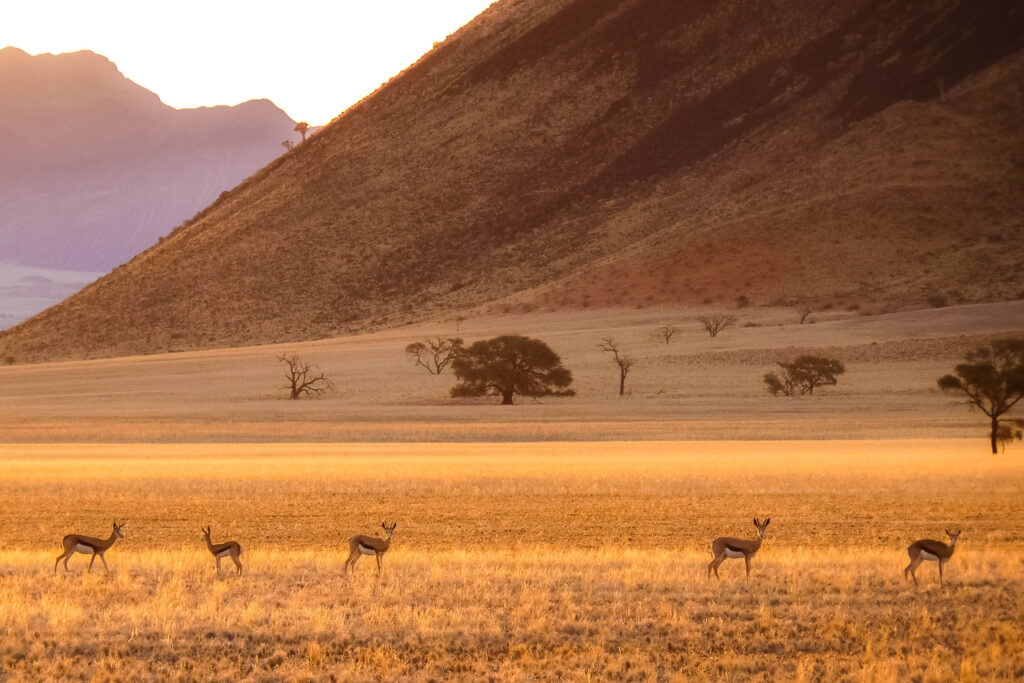
The Park has an area of 49,800 km² and that is why it is one of The 10 largest National parks in Africa and at the time of proclamation it was the largest protected area in Namibia.
The Park is situated at the Atlantic coast and borders the Dorob Park to the north, the Restricted Diamond Area in to the south and it shares the border with the private NamibRand nature reserve to the east.
In the north east the Naukluft Mountains form part of the Park as well.
The Park was formed from four regions namely Namib, Naukluft, Sesriem/Sossusvlei and Sandwich Harbour whereby some parts of the Restricted Diamond Area have been added.
Should the diamond reserves in the still existing Restricted Diamond Area be depleted propositions have been made to extend the Park to the South African border.
ALSO CHECK – the most dangerous mountain in the world
- Gilf El – Kebir National park
Gilf El-Kebir National Park is located in the New Valley Governorate which is around 1600 kilometers from the city of Cairo and lies on the Libyan-Sudanese border and is one of The 10 largest National parks in Africa.
It was declared as a protectorate during the year 2007 AD.
It features sand dune plains along with ancient caves related to the Prehistoric period, and these plains are situated between Gilf El Kebir plateau and Gabal El Uweinat.
In addition, it includes Nubian sand rocks, ancient volcanic holes as well as mountainous areas and valleys.
There is also one of the largest Meteorite fields in the world.
It is an area that supports the survival of wild animals such as wild sheep. In addition, it houses different species of birds like Egyptian vulture, stroke, long-legged buzzard and more, in addition to containing several mammals, including Rüppell’s fox, Gazelle and others.
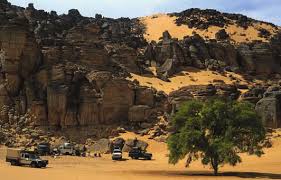
The protectorate is one of the well-known destinations which attract various tourists from all over the world to enjoy the adventure of going on safari trips in the desert and climbing the peaks of mountains and to watch amazing natural scenes.
Therefore, if you are an adventurous person and wish to have an exciting trip, do not hesitate to head to Gilf El-Kebir National Park and have an entertaining time.
- Luengue- Luiana and Mavinga National Park
Although they are technically two separate parks, the Mavin , and the Luengue-Luiana National Parks create one contiguous protected area across Angola, Zambia, and Namibia (many bordering African national parks drop their fences to create larger park and is in the list of The 10 largest National parks in Africa.
Together the Luengue-Luiana and Mavinga National Parks protect roughly 32 587 square miles (84 400 km²).
The understanding between government authorities was mediated by African Parks, an NGO that assists governments in meeting their conservation goals by providing management, scientific, and other services.
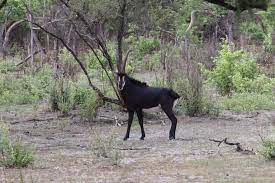
The importance of “peace” parks and other joint operations is that it brings all the stakeholders around the same table to work together in conserving their precious natural heritage. The agreement was signed in 2021 and will run for 20 years before re-evaluation.
This area is rich in wildlife, including elephants, cheetah, hyena, hippopotamus, and many other game species.
The area is also typical of the savanna biome, with grasslands, and scattered trees, representing miombo woodland vegetation.
Several rivers pass through the region, including the Longa and Cuito rivers. The park is open to tourists, who can enjoy safaris, overnighting at surrounding lodges, and other activities.
- Kruger National park
Kruger Park is South Africa’s most exciting African safari destination.
Steeped in legend and history, the iconic Kruger National Park in South Africa is waiting for you to explore its vast landscapes and spectacular African wildlife. It is considered to be one of the 10 largest National parks in Africa.
Plan your Kruger National Park safari trip from our recommended safari tour options, which range from exclusive private safaris to affordable group safaris. Take a journey of exploration to find Africa’s Big Five : Elephant, Lion, Rhino, Leopard and Buffalo, you will discover unique wildlife on a real Kruger National Park safari in Africa.
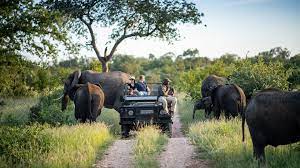
Why is Kruger National Park famous?
All of Africa’s iconic safari species – elephant, lion, leopard, cheetah, rhino, buffalo, giraffe, hippo and zebra – thrive here. The Kruger National Park is home to over 12,000 elephants, 27,000 African Buffalo, 2,000 leopards and 2,800 lions. It’s also regarded as the best place in the world to see a leopard.
The best time to visit the Kruger National Park is the dry season from May to October for the best game viewing and walking safari conditions. Vegetation is low and sparse at this time of year, making animals easier to spot and track, while the permanent water sources offer a rewarding safari experience in the Kruger.
- Salonga national park
Salonga is one of five natural World Heritage sites in DR Congo, all of which have been on the in-danger list for over two decades. And it is one of The largest National parks in Africa.
Salonga National Park had been on the in-danger list since 1999 due to impacts from conflict, poaching and illegal occupation.
It subsequently has also faced potential threats from oil concessions granted in areas overlapping with the site.
The government of DR Congo has now confirmed these concessions no longer are valid.
Inscribed on the World Heritage List 1984, Salonga National Park, situated in the heart of the Congo basin, is Africa’s largest tropical rainforest reserve.
It is home to many threatened species, such as the dwarf chimpanzee, the Congo peacock, the forest elephant and the African slender-snouted or ‘false’ crocodile.
Salonga National Park, largest reserve in Congo (Kinshasa), Africa, covering more than 14,000 square miles (36,000 square km) and located midway between Kinshasa, the national capital, and Kisangani, 720 miles (1,160 km) to the northeast.
- Gebel Elba national park
One of Egypt’s unforgettable heavens; Gebel Elba National Park is a remote place in the southeastern corner of Egypt, where Elba Mountain blossoms on one side and a network of small valleys and Red Sea hills are situated on the other side, separating the Red Sea coast from the southernmost mountain of Egypt, Elba Mountain. It is one of The 10 largest National parks in Africa.
The park – Egypt’s largest and richest protected area – stretches over 50 square kilometers north of Shalateen, all the way south to the Egypt-Sudanese border. Also, it lies 250 kilometers south of Marsa Alam.
Elba park is considered a biodiversity laden land which encompasses a myriad of ecosystems ranging from marches, coastal plains, mangroves and coral reefs to mountain high lands, sand dunes and valleys including around 458 plant species of acacias, moringas and dragon trees, 86 different corals, 104 fish species, 60 resident birds comprising eagles and falcons, and 26 mammals including gazelles, Barbary sheep and ibexes.
But what makes this area unique is its weather which is relatively moist because of its closeness to the sea and favorable position in the face of humid winds, affecting the surface temperature of the rocks and any exposed surfaces causing them to be cool overnight.
The area also witnesses unusually high rainfall of 400 millimeters each year on average, which is caused by a combination of prevailing north east rain bearing winds over a wide range of the mountain, forcing moist clouds upwards and causing them to cool, condensate and eventually rain.
The park’s high precipitation levels, combined with the cooler temperatures of the higher altitudes, sustain a surprising variety of wildlife – from 40 species of birds and 30 species of reptiles to 23 species of mammals that have been recorded in the park.
The most highlighted landscape in this region is Mount Elba, which is Egypt’s second highest mountain, at 1,435 meters high, whose summit is a “mist oasis” that contributes in the forming of dew, mist and clouds.
- Boucle du Baoule national park
This National park is located near the town of Bamako in the western region of Mali and is one of the 10 largest National parks in Africa.
The park is largely covered in West African Savannah although the vegetation is divided into two bio-geographic regions of Sudan Guinea in the south and Sahelian zone in the north.
Other parts of the park are combretum shrub, Savannah woodlands, and a dense rain forest on the banks of Baoule River.
The park occupies an area of 25, 330sq km established in 1982 and is an acknowledges UNESCO World Heritage Site since September 1999.

Some of the animals in the park include Saheran gazelles, giant eland, sheep, goats, and many other mammals.
The park is increasingly affected by human land pressure for agriculture, livestock keeping, and human settlement. In 1981, the livestock population was estimated to 13,500 zebus and 59,500 sheep and goats.
Various ethnic groups live in the area: sedentary Kakolo, Sarkolés, Malinké and Bambara (farmers), the transhumant Peuhls and Maures, and the Bozos (fishers). Depending on the season, between 78,300 and 150,000 people live in the biosphere reserve (1998).
The land tends to be used for pastoralism in the north during the dry season and for agriculture throughout the area depending on the local rainfall conditions.
Boucle du National park covers an area of 25,330 km² but has little large wildlife. The park is known for its prehistoric rock art and tombs.
The Boucle du Baoulé National Park lies in western Mali, in Kayes Region and Koulikoro Region, set up in 1982.
October, November, December, and January are the best time to visit Mali. This is the dry season, but the harmattan has yet to fully kick in, so it’s the most pleasant time to travel and game viewing can be good.
- Hwange National park
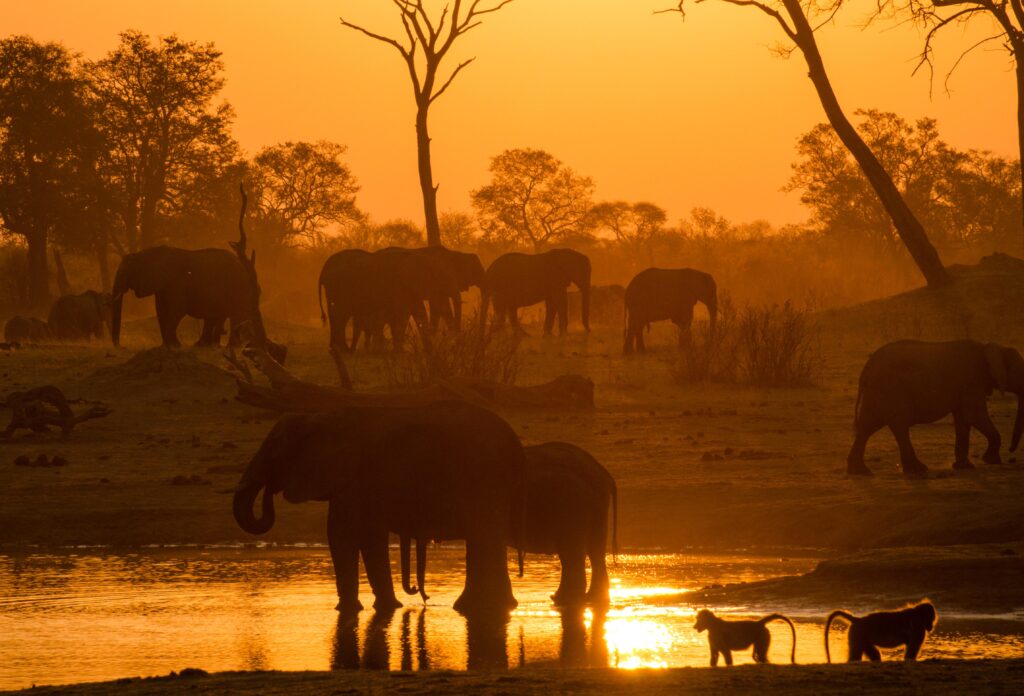
Hwange, one of the world’s last great Elephant sanctuaries, is one of The 10 largest National parks in Africa.
Covering more than 14,600 square kilometers(5,863 square miles) or 1,460,000 hectares it has more animals and a greater variety of species -107- than any other park in the country, and more than 400 species of birds.
It is situated in the south west of Zimbabwe between Bulawayo and Victoria Falls.
There are two distinct geographic zones, neither are able to support viable agriculture.
The flora of the well drained northern area, part of the Zambezi watershed, is dominated by mopane and mixed terminalia, which is distinctly different from the rest.
August, September, October and early November are by far the best months for game viewing in this park.
Water becomes extremely scarce and the animals congregate around the few pumped waterholes. Sitting patiently and quietly at one of these water holes will reward you with very good game viewing.
- Boma national park
Boma National Park is situated in south east South Sudan and is an integral component of a larger 200,000 km2 ecosystem that stretches west through the Jonglei corridor to Badingilo National Park and north to the Sudd, an inland delta bordering the White Nile, one of two primary tributaries of the Nile River.
This area contains the second largest land mammal migration in Africa, where each year hundreds of thousands of white-eared kob, Mongalla gazelle, tiang and reedbuck move north and east from the wetlands on the bank of the White Nile towards Boma and Gambella National Park in Ethiopia.
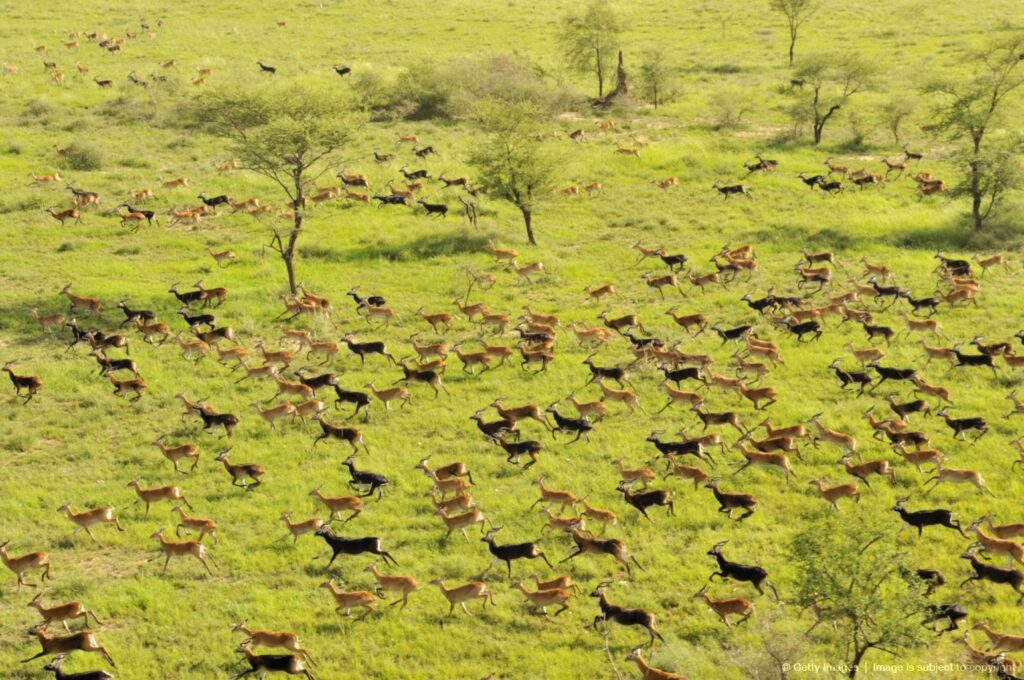
But this area supports far more than just wildlife, various White Nile tributaries drain throughout the landscape creating rich black cotton soil that sustains the livelihoods of millions of people.
At 19,189 km2, Boma serves as the largest national park in this globally significant system. However, continuous armed conflict has severely impacted the lives of communities in and around protected areas in South Sudan, and as such, has resulted in a major pressure on the country’s wildlife and their habitats, including Boma.
Boma supports part of the second-largest land-mammal migration in Africa, where hundreds of thousands of white-eared kob, Mongalla gazelle, tiang, and reedbuck move through the landscape on an annual basis.
The park is a proposed UNESCO World Heritage Site and is an Important Bird Area (IBA) that hosts approximately 400 bird species, including shoebills and the black-crowned cranes.
In addition to white-eared kob, Mongalla gazelle, tiang, and reedbuck, the park also supports populations of elephant, Nubian giraffe (sub-species of northern giraffe), buffalo, and Lelwel hartebeest and small populations of lion, cheetah, wild dog and leopard.
Boma has a significant number of people living inside its boundary who are composed of different ethnic groups, including the Murle, Jie, Kichepo, Toposa, Anuyak, and Nuer. Each group has distinct traditions, cultures, and livelihood activities.
- Kafue national park
Found in the center of western Zambia, Kafue National Park is the oldest and largest of Zambia’s national parks.
It covers a massive 22,400 km2.
First established as a National Park in the 1950s by the legendary Norman Carr, Kafue is one of the largest national parks in whole of Africa.
Despite its size and prominent location only two hours drive from Livingstone, it remains little-known and largely unexplored with vast tracts of its virgin bush still untouched.
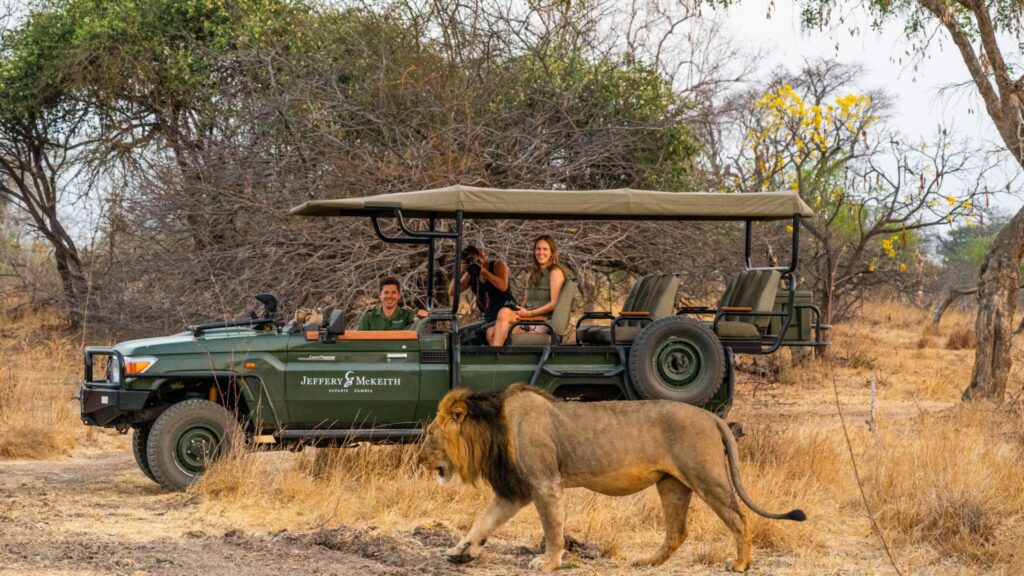
Thanks to its size and variety of habitat types the Kafue holds a fantastic diversity of wildlife .
In recent years the Park has seen a well-managed growth in the number of Safari Camps and Lodges that operate in and around the Park. This new interest has brought with it more visitors and investment to the area, notably in infrastructure with a number of well-graded roads and airstrips.
The largest national park in Zambia, Kafue National Park, covers 8 649 square miles (22 400 km²). It is larger than the relatively nearby Kruger National Park by around 1125 square miles.
Kafue was originally established as a National Park as early as the 1950s. Although it is a large park with a lengthy heritage, it is another relatively unknown region.
This relative obscurity is probably a positive, as much of the national park remains less disturbed by human activities.
However, Kafue National Park has seen its share of visitors, and their contributions allow the park to continue upgrading its facilities.
The park’s positive attention means that the protection afforded to the plants and animals subsequently increased. A testament to good conservation at work.
Kafue National Park is home to diverse plant and animal life, including cheetah, lions, elephants, leopards, blue and yellow-backed duiker, and more ungulate species than anywhere else in southern Africa. There are over 500 bird species.
There are also several habitat types in the park, including Miombo woodlands (semi-deciduous woodland, with Brachystegia, Julbernardia, and Isoberlinia trees dominating), open savanna plains, and the Kafue River and riverine vegetation.
All the national parks mentioned are The 10 largest National parks in Africa.
